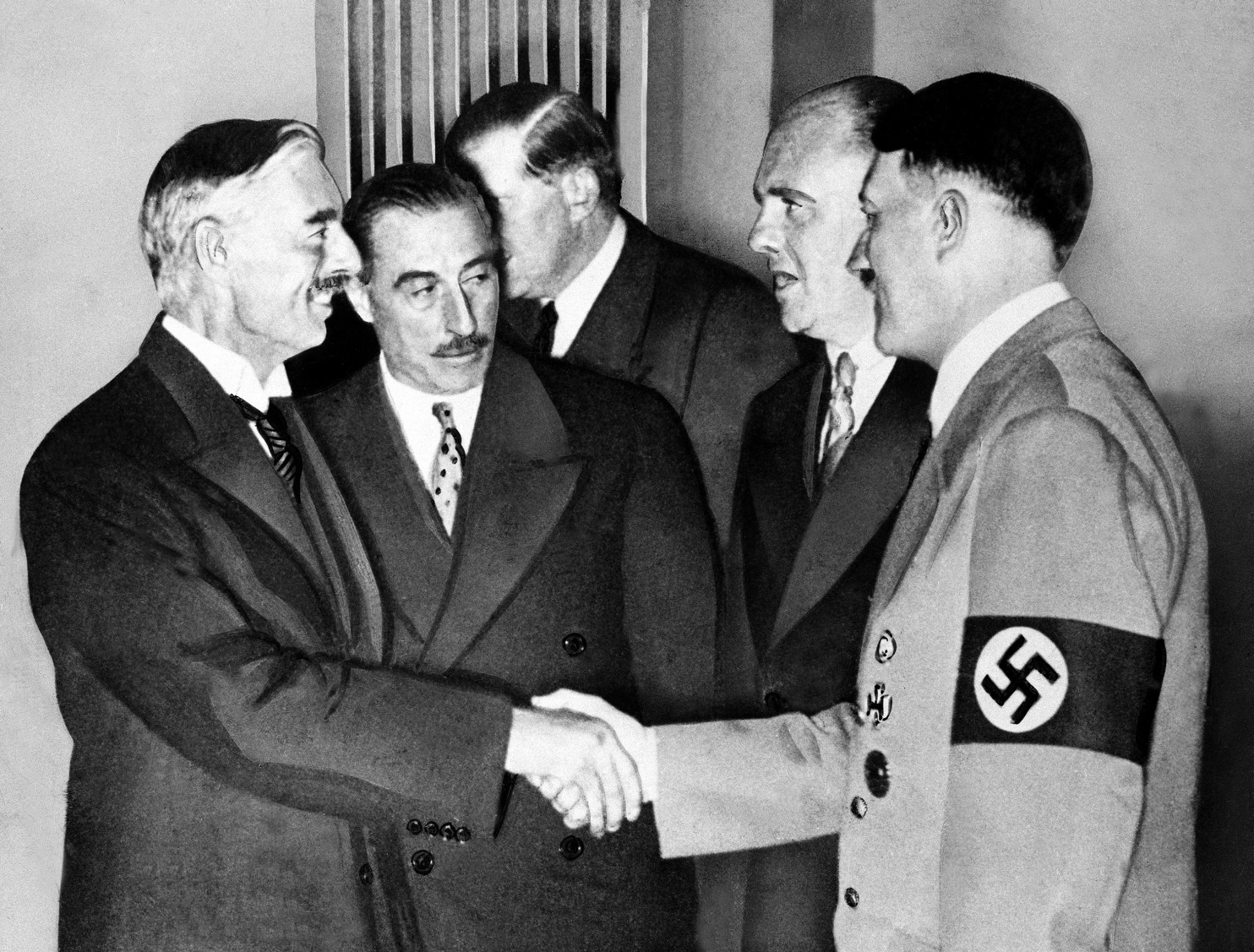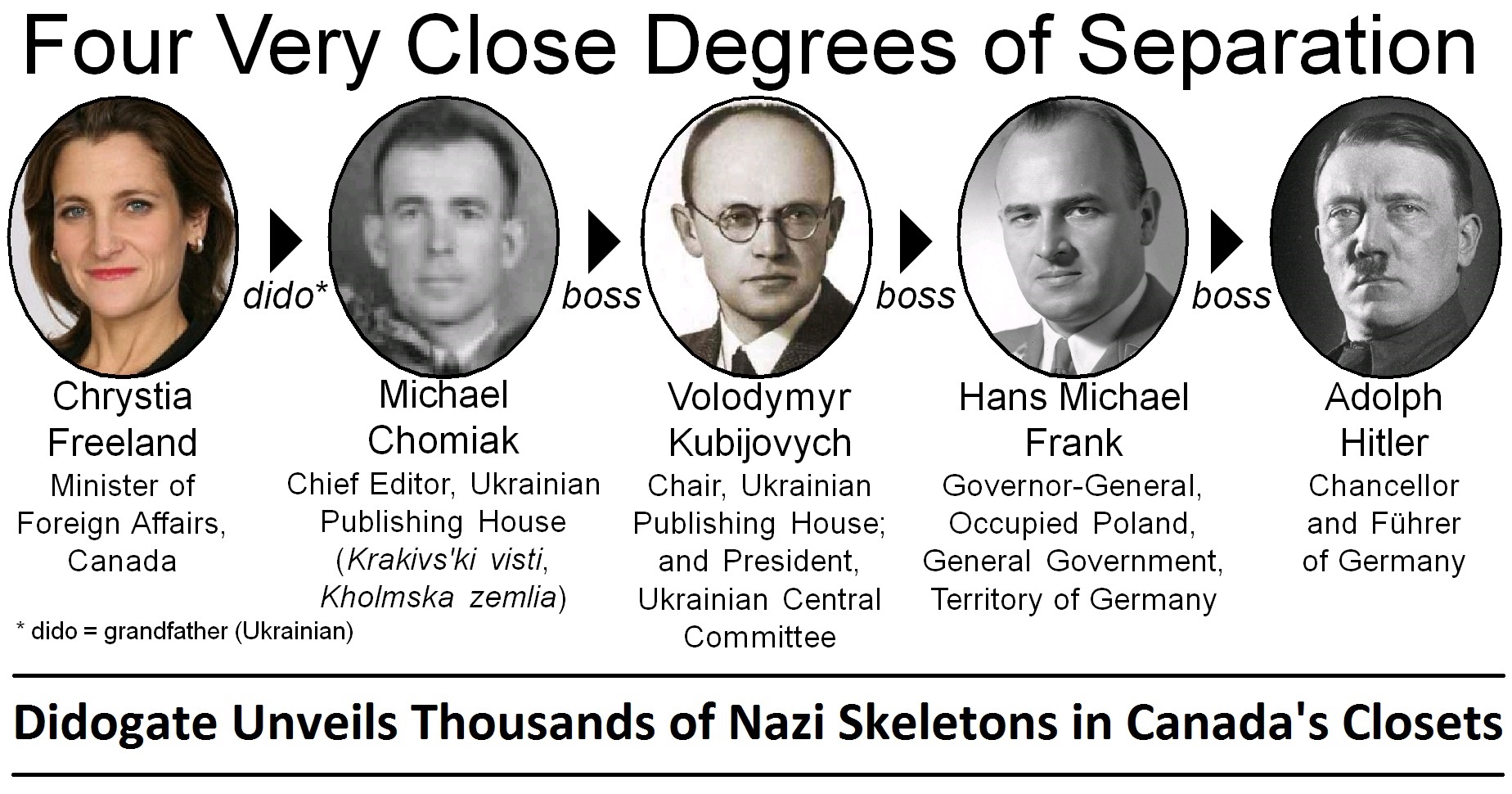
Minister Freeland's Grandfather,
Fake News,
|
|
|
By Richard Sanders, editor, Press for Conversion! magazine of the Coalition to Oppose the Arms Trade, March 22, 2017 "It takes a village to raise a Nazi" (old African proverb, slightly modified) |
|
|
1-
Introduction 2 - The Liberal Government's Warm Embrace of Ukraine's Nazi Collaborators 3 - Historical Amnesia and the Blinding Effects of Propaganda 4 - The Nazis as Victims? Sure, just Blame the Russians! 5 - Canada needs Truth and Reconciliation, not Denials and Obfuscation 6 - Historical Denial among Canada's ultranationalist Ukrainians 7 - Michael Chomiak, The Ukrainian Central Committee and its Nazi Newspapers 8 - Aryanisation and the "Mighty Wurlitzer" 9 - The Ukrainian Canadian Congress and its Fascist Roots 10 - Getting them Early: Building the ultraNationalist Cause among Children and Youth 11 - The Freeland-Chomiak Parallels in Advocacy Journalism 12 - Was Freeland an "Accidental Journalist," or Groomed for the Job? 13 - In 1989, Freeland was Declared an "Enemy of the Soviet State" 14 - A Chomiak-Freeland Fixation on Jewish Oligarchs running the Kremlin 15 - Freeland's Kremlin-Oligarch Theory goes Global with Jewish Plutarchetype 16 - Institutionalised Confidence Scams: An Open Conspiracy of Oligarchs, Politicians and Journalists 17 - Escaping the War Racket starts with Seeing the Elephant 18 - Just Following Orders? Which Orders? 19 - Is there a Bear in the Room? Kill it! 20 - The Collective Care and Feeding of Russophobia 21 - The Need for Truth and Reconciliation
If you appreciate the work that went into this research, please
subscribe &/or donate.
You can mail this
coupon
to COAT, or use the
Paypal link
on our homepage. Subscription prices:
Captive
Canada: This issue (#68) deals with the mass internment of Ukrainian Canadians, this community's left-right split and the mainstream racist, xenophobic anti-communism of progressive "Social Gospellers" (like the CCF's J.S. Woodsworth) who were so captivated by their false beliefs that they carried out the genocide of First Nations and turned a blind eye to government repression during the 20th-century "Red Scare." The main thesis of my theory: |
Part 3 As is typical among many ultranationalist Ukrainians within the Canadian diaspora, any feelings of shame or dishonour that might reasonably be linked to their forebear's collaboration with Germany's war atrocities are deeply sublimated by either outright denials regarding Ukrainian complicity in Nazi horrors such as the Holocaust, or by rationalisations which claim that in the grand patriotic struggle for Ukrainian independence, their national heroes were merely fighting the evil Soviet Union, not aiding the Third Reich. This sublimation of the truth about Nazi collaboration involves both psychological and cultural processes.
Freeland's grandfather, Michael Chomiak, contributed to Ukrainian ignorance about the war by spreading German war propaganda across Europe through a Ukrainian-language mass media network that was established by Nazi largesse. Of course, that's not her fault.
But what Freeland does need to explain is why she kept this truth hidden from the Canadian public. For at least twenty years, Freeland has known many of the gory details about her Ukrainian grandfather's key role in the Nazi news behemoth. She knew for example that the daily newspaper under his control disseminated antiSemitic fake news which conflated Jews with those much-reviled political enemies of the German-Ukrainian axis that were said to be operating from the Kremlin in Moscow. We know that Chrystia Freeland was made aware, in great detail, of her Ukrainian grandfather's pivotal role as a newspaper editor overseeing this hatemongering "fake news," because she was acknowledged in a scholarly article on that subject. The article, "Krakivski visti and the Jews, 1943," was published in 1996 by John Paul Himka, a prominent Ukrainian Canadian scholar who was then a professor of history at the University of Alberta. He listed Freeland as having reviewed his article and he credited her, among a few others, with "pointing out problems and suggesting improvements." Himka then added an additional caveat, saying: "In the case of this particular article, I would like to say explicitly what should go without saying: that I alone am responsible for the views expressed herein."[i] However, despite having this information in 1996, Freeland has never mentioned it in any of the glowing narratives that she has publicly shared about her maternal grandfather. For many years, Freeland's whitewashed renditions of her grandfather's war-time life were spread far and wide thanks to the corporate news machine. These narratives completely hid all information about what he was actually doing during the war. And, there seems to be no evidence that any journalist ever asking her to elaborate even a little on what her grandfather was actually doing during any of the war years. Even now, after the news of complicity with the Nazi regime finally broke through the Great Wall of Media, very few details of Chomiak's propaganda work have slipped through the cracks. Tons of detailed evidence is there waiting to be exposed, if only the media were interested.
Despite the major lacunae in Freeland's official version of her grandfather's war years, she has always been sure to use that family story to malign the Soviets and to highlight the positive role that her collaborationist grandfather played in inspiring her fiercely patriotic Ukrainian spirit. This spirit has clearly been a driving force throughout her life as a strident Ukrainian political activist, an advocacy journalist vilifying Russian leaders and now a Liberal cabinet minister responsible for representing Canada's decidedly antiRussian foreign affairs' policies. Chomiak's daily paper, Krakivs'ki visti, presented the Nazi version of truth by whitewashing the Holocaust and other mass murders from history. It was a prime example of what the Los Angeles Museum of the Holocaust (LAMOTH) called a "Ukrainian Collaborationist Newspaper." LAMOTH houses an online collection of three such newspapers, including numerous issues of Krakivs'ki visti. It describes this group of records by saying: "Ukrainian newspapers followed official German ideology. They adopted anti-Bolshevik rhetoric, but emphasized Ukrainian economic and cultural development under German auspices. The editorial boards carried out a policy of soliciting Ukrainian support for the German cause. German administration limited the scope of both publications, Lvivski Visti and Krakivski Visti, to pure Ukrainian internal affairs and to the demonstration of Ukrainian support of the Nazis’ 'New Order.' It was typical, within these publications, to not ... give any accounts of the German genocidal policy, and largely, the editions resorted to silencing the mass killing of Jews in Galicia. Ukrainian newspapers presented the Jewish Question in light of the official Nazi propaganda, corollary to the Jewish world conspiracy. "Execution of the Final Solution was never a theme for the Ukrainian periodicals published under German control."[ii] So, while shocking realities ‑ like Ukrainian participation in the Holocaust and the mass murder of Poles and Soviets ‑ were consistently left out of their newspapers' narratives, Ukrainians living under the Nazi's generous protection were left free to build proud images of themselves and their culture. Despite the horrors of WWII, these untarnished self-images still remain largely intact among many offspring of the Third Wave Ukrainian émigrés who came to reside under the safety blanket of multicultural, "Canadian values." Forgotten (or, rather, never learned) by so many of those living in the ideological village which raised Freeland, are basic historical realities about how the German military ‑ with the assistance of their ultranationalist Ukrainian collaborators ‑ exterminated 1.6 million of the 2.5 million Jews who had lived in Ukraine before the war. The Third Wave émigré village, and many others within Canada's mainstream culture, have also been sheltered from learning another basic truth ‑ that 900,000 Jews survived the Ukrainian "Holocaust of bullets" because they escaped to the safety of the USSR in 1941. Their escape from the mass murder that befell most Ukrainian Jews was achieved thanks to the protection offered to them by the Soviet Red Army which was forced to retreat from Ukraine when the Nazis launched Operation Barbarossa. This massive German invasion ‑ across a front that spanned 2,900 kms ‑ deployed 3.8 million Nazi troops, 3,350 tanks, 2,770 warplanes and 7,200 artillery pieces. It remains the largest invasion in world history.[iii]
The Nuremberg Trials also revealed that the Nazis destroyed "40,000 ... medical institutions." This left millions of wounded Soviet citizens without their state health-care system. And, because the Nazi invasion killed tens of millions of cattle, pigs, sheep and goats, and "destroyed and looted 98,000 collective farms" and "1,876 state farms,"[v] the Soviet people faced starvation. Six million Soviets died from disease and lack of food. This was a genocide beyond comprehension. But, to those whose cultural narratives make them blind to Soviet suffering ‑ preferring instead to always see the "Russian Bear" as the evil aggressor ‑ the Barbarossa invasion has been ethnically cleansed from history, and hidden in a mass grave of facts about the Nazis horrendous crimes against peace and humanity.
"We are all so happy that tears well in our eyes. Some of our people were so shocked by the good news that they fell ill from sheer happiness. ... [T]he heroic German Army is helping to create an independent Ukraine and is bringing freedom to all the nations. Hence...our simple gratitude to the Fuhrer and his triumphant army in which Ukrainians take pride. All our people, all over the country are cheering their liberators.... Glory to Adolph Hitler Fuhrer of the German nation! Glory to the heroic German Army!"[vi] And how was Nazi's genocidal Barbarossa invasion and its mass murder of Soviet citizens portrayed in that Ukrainian propaganda organ under Michael Chomiak's control? "At last the hour has come!" declared Krakivs'ki visti in 1941. "Our dreams, our ambitions are now reality. This is our resurrection.... The German Army is bringing us our cherished freedom."[vii] This is how the daily newspaper edited by Chrystia Freeland's grandfather delivered the wonderful news about the early victories of the Nazi's unprecedented killing spree against the Soviets.
But even the most obvious truths of history, such as the fact that the Soviets and Nazis were mortal enemies throughout WWII, are studiously ignored by Freeland and others who have been sheltered by the ultraright ideology of her Ukrainian village. Instead, they try to equate the Nazis and the Soviets. This historical illiteracy requires them to deliberately turn a blind eye to the Nazi's vehement hatred of all things Soviet and communist. This Nazi hatred can be seen in everything from their staging of the Reichstag fire in 1933 (and then framing communists as a pretext for repression), to their 1941 invasion of the USSR. And how can Freeland forget the prodigious outpourings of Nazi propaganda against Soviet communism, including that expressed in Ukrainian newspapers overseen by grandfather Michael Chomiak? But instead of acknowledging the most basic reality of WWII ‑ that Germany and the USSR were diametrically opposed enemies ‑ Freeland and others aggressively project their fake rendition of history to brand the Soviets and Nazis as close friends and allies during WWII. For example, in 2016, Freeland invoked the memory of her Ukrainian grandparents in order to highlight an ultraright propaganda event called "Black Ribbon Day." On that day, she tweeted: "Thinking of my grandparents Mykhailo & Aleksandra Chomiak on Black Ribbon Day."[viii] This day exemplifies the kind of historical amnesia, obfuscation and outright denial of historical facts that allows people to ignorantly proclaim the fallacy that the Soviet Union and Nazi Germany were actually allies during WWII.[ix] This day was used by Prime Minister Harper to launch the controversial "Memorial to the Victims of Communism" in 2014. His announcement on that day, made at a $250-per-plate fundraising dinner, included an initial pledge of $1.5 million from the Government of Canada.[x] Besides being promoted by the Ukrainian Canadian Congress, both Black Ribbon Day and the anticommunist monument are also promoted by the Liberal government, and supported by all the parliamentary parties. |
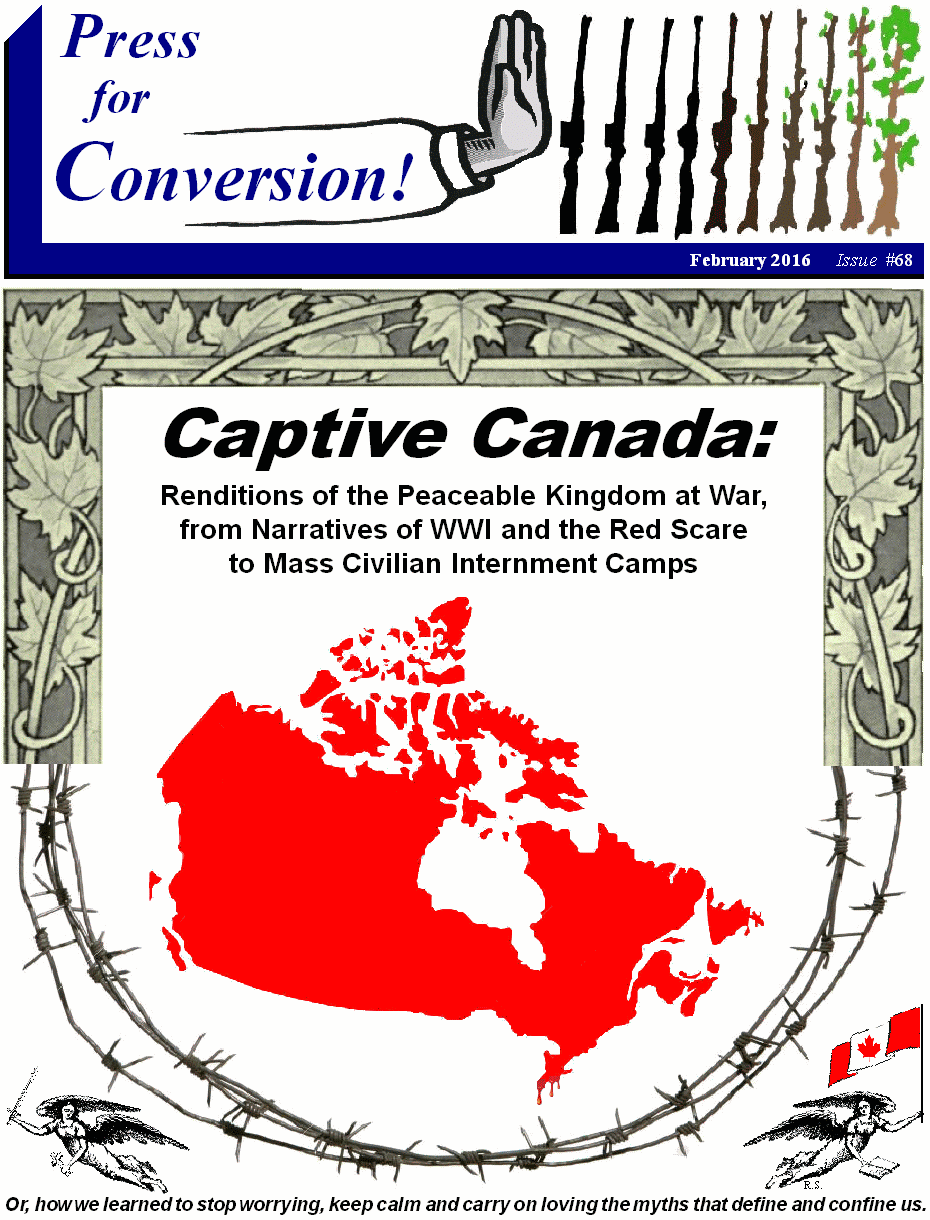
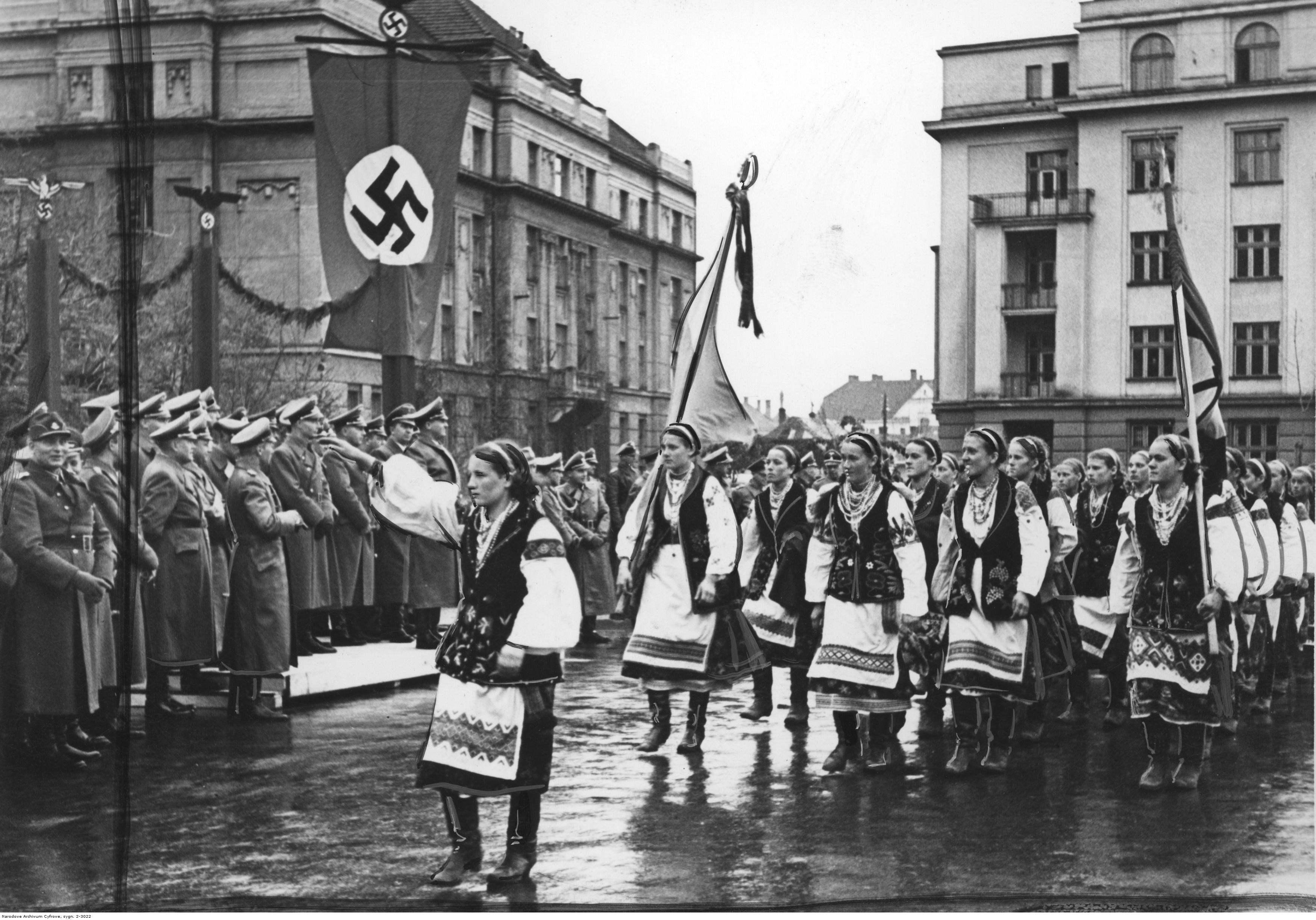 Individuals are aided and abetted in the
process of repressing, forgetting and justifying uncomfortable historical
truths, by cultural institutions which construct the core narratives about
history and contemporary events. The institution of family is of prime
importance because of its role in creating a child's foundational beliefs
and attitudes, and in establishing which social authorities they should
place their confidence in throughout adult life. For some, the leaders of
their national, ethnic or religious identities are the key sources of
information in whom faith should be placed. For others, the mass media is
seen as the most reliable source of facts. When messages received from all
of these social institutions are virtually the same, and people's beliefs
are reinforced from all angles, they develop an almost unshakable confidence
in the presiding narrative. Even if one's cultural myths completely ignore
basic historical realities and truths, it does not matter, they will be
accepted as gospel and believed because people just don't know any better.
Individuals are aided and abetted in the
process of repressing, forgetting and justifying uncomfortable historical
truths, by cultural institutions which construct the core narratives about
history and contemporary events. The institution of family is of prime
importance because of its role in creating a child's foundational beliefs
and attitudes, and in establishing which social authorities they should
place their confidence in throughout adult life. For some, the leaders of
their national, ethnic or religious identities are the key sources of
information in whom faith should be placed. For others, the mass media is
seen as the most reliable source of facts. When messages received from all
of these social institutions are virtually the same, and people's beliefs
are reinforced from all angles, they develop an almost unshakable confidence
in the presiding narrative. Even if one's cultural myths completely ignore
basic historical realities and truths, it does not matter, they will be
accepted as gospel and believed because people just don't know any better.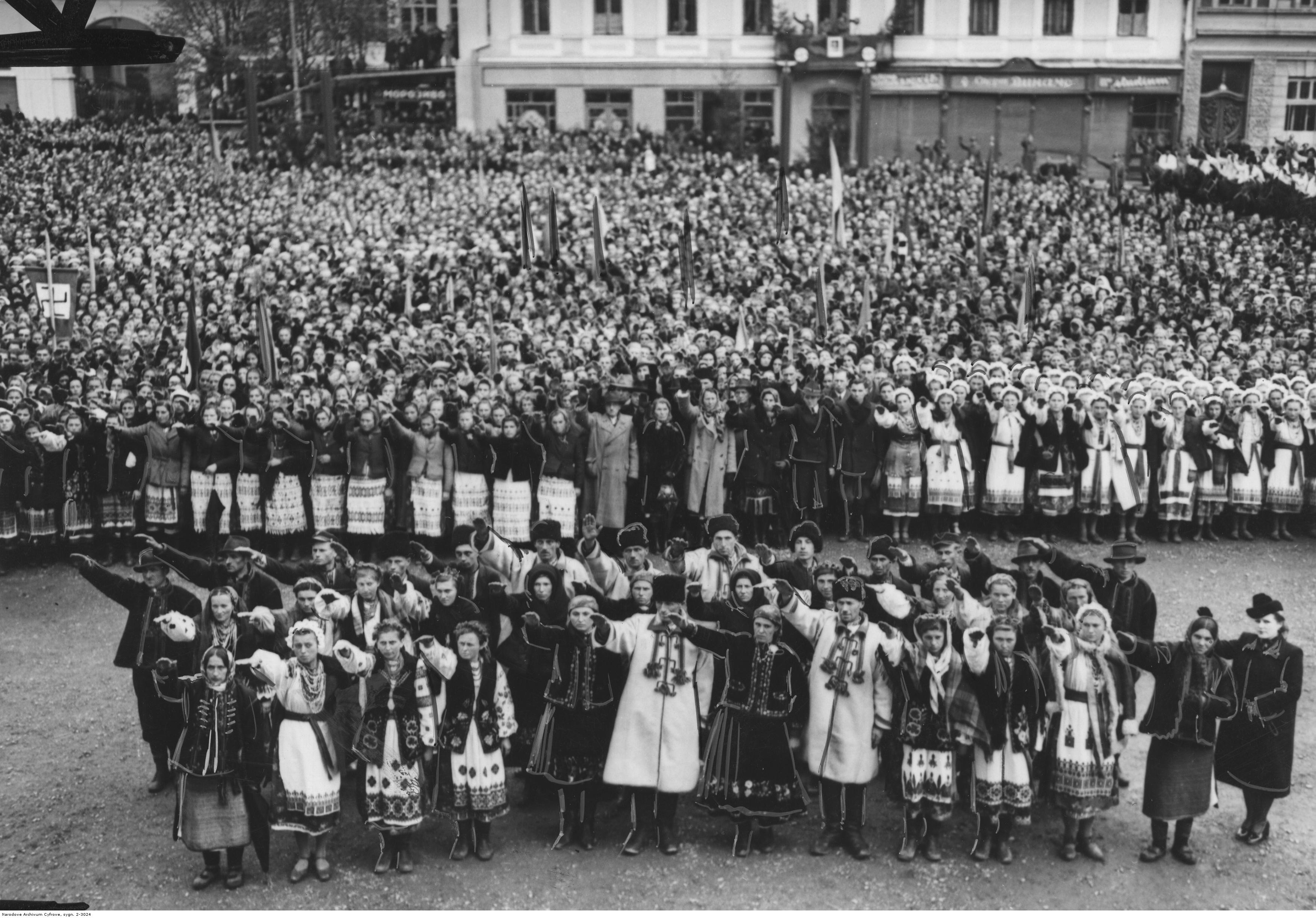
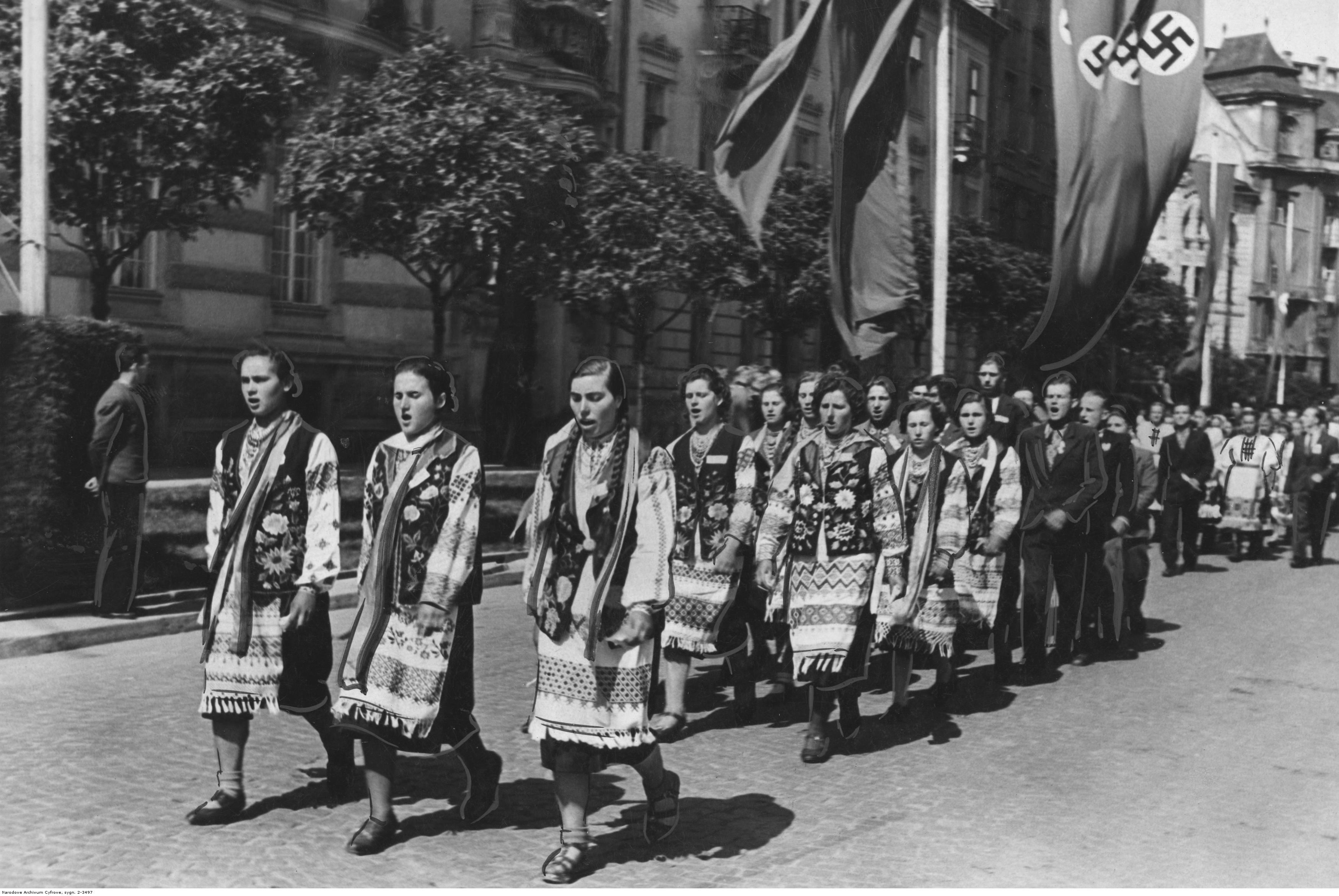
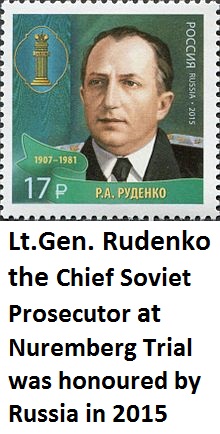 Operation
Barbarossa
Operation
Barbarossa To many
Ukrainian nationalists, the Nazi's mercilessly brutal invasion of the Soviet
Union was welcomed with gleeful euphoria. For example, a Banderite
newspaper in Ukraine rejoiced in 1941, proclaiming
To many
Ukrainian nationalists, the Nazi's mercilessly brutal invasion of the Soviet
Union was welcomed with gleeful euphoria. For example, a Banderite
newspaper in Ukraine rejoiced in 1941, proclaiming  Soviet
civilians not only took the brunt of Germany's war crimes, 75% to 80% of the
allied forces who died fighting against Michael Chomiak's Nazi side in the
war, were Soviets. By eventually turning back the Nazi invasion
Soviet
civilians not only took the brunt of Germany's war crimes, 75% to 80% of the
allied forces who died fighting against Michael Chomiak's Nazi side in the
war, were Soviets. By eventually turning back the Nazi invasion 